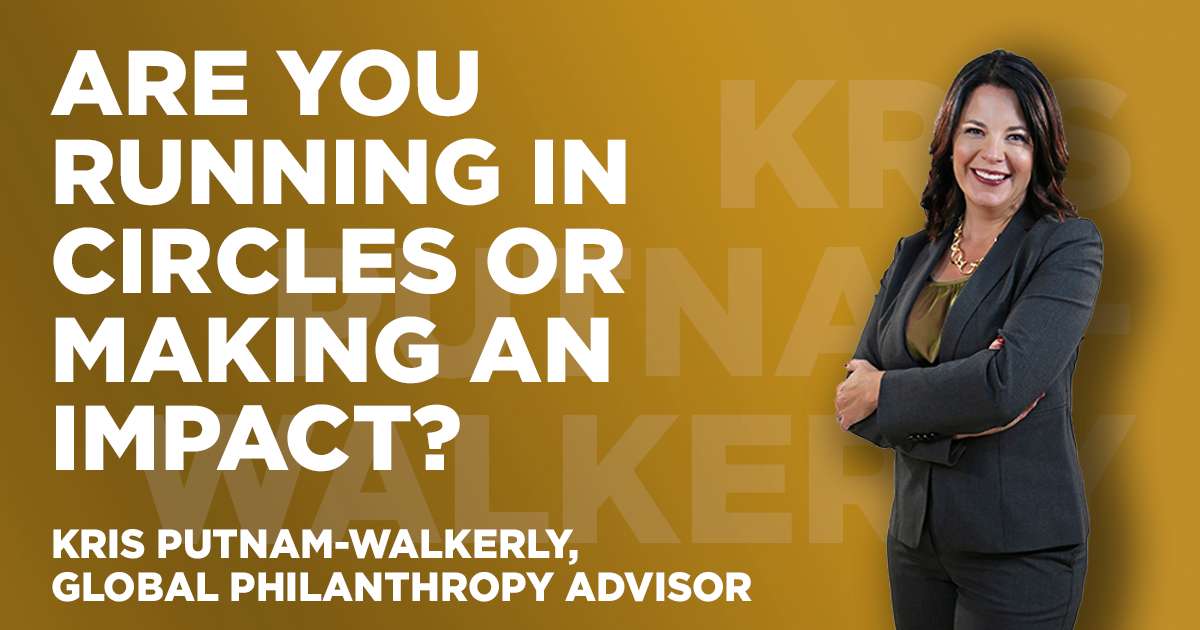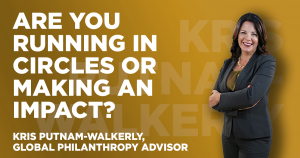Follow a program development life cycle to achieve the greatest funding impact.
Our society focuses on getting things done. Check the box. Scratch it off the list. Move on to the next thing. But when it comes to making lasting change, funders should think of their work in terms of a cycle, not a linear progression. This doesn’t mean funders should run in circles, but they should realize that impact comes from a “life cycle” approach to developing and launching grantmaking programs and funding initiatives.
The same process can be applied to funders. I call this the Foundation Program Development Life Cycle, and I have identified its six stages.
Stage One: Plan
Think about what you want to accomplish, then determine what you’ll need to get there and how you’ll know when you’ve arrived. This is where you set goals and decide on your approach. Identify the partners and resources you’ll need. Create a theory of change, if that’s something useful for your work. And identify how and what you’ll evaluate to measure your success.
Stage Two: Pilot
Piloting your new grantmaking program can take many forms. You might start making grants to identified partners right out of the gate, or you could provide some seed funding in the field to see what takes and what doesn’t. This is a time to test your theories and ideas — and it’s a stage that many funders, in their haste to achieve measurable impact, skip over. But piloting is crucial. You wouldn’t charge across an icy pond without first testing to see if it could hold your weight. Why would you throw all your grant dollars into the fray without first testing to see if your idea will stay afloat?
Stage Three: Learn
For many funders, learning is happenstance. But in this life cycle, it should be intentional, disciplined, documented and discussed with advisors or staff in order to draw solid conclusions about your impact. There are all kinds of ways to inform your learning. Collect evaluations from grantees (either self-reported or via an external evaluation that you’ve paid for). Collect data about the issue you’re trying to address. Convene experts, colleagues and/or partners to discuss experiences and observations. Scan and assess the environment and see the wisdom of those outside your immediate circle. Continually ask the question, “What can we learn next?” and be sure to keep an ongoing record of what you learn.
Stage Four: Refine And Improve
If you’ve done the work of piloting and learning, then you’ve no doubt identified ways that you can refine and improve your funding initiative before you move to broad implementation. Perhaps it’s just tweaking a tactic or two. But maybe it’s something more substantial, like replacing a partner who isn’t the right fit or investing more in grantee capacity so that they can accomplish what you all hope for without crippling themselves in the process. Or perhaps your learning has helped you realize that your own role as a funder needs to change to truly achieve what you hope. For example, you may realize that you need to step back from a leadership role to let those on the ground spearhead the efforts, or you may decide to invest more in your own staff capacity before you can proceed. Not all refinements will be easy or quick, but think how much more effective your implementation will be because you made them now instead of later!
Stage Five: Implement
This is where the proverbial rubber meets the road, and it’s no time to simply sit back and watch. Despite your best efforts at piloting, learning and refining, there will be hiccups along the way. That’s okay. You can continue to learn and improve as you go, and your efforts will be the better for it. Also, implementation may take more time than you had originally allotted, because even the best-laid plans can go awry due to unforeseen influences. Take it in stride, maintain an open and adaptive mind and continue to work closely with your grantees and partners to see it through.
Stage Six: Evaluate
Evaluation can and should be a factor at every stage in the life cycle, culminating in the big questions of, “What did we accomplish?” and “What did we learn along the way?” Be sure to incorporate evaluation that is formal, objective and rigorous so that your findings are true and valid. Unfortunately, far too many funders skip this step, choosing not to plan for and invest in a robust evaluation. However this step is absolutely essential, because the evaluation will inform the beginning of the next program development life cycle.
There are no hard-and-fast rules for timing of the life cycle, and I would counsel funders to think about how each stage relates to the others rather than envisioning a linear calendar. For example, at first glance one might assume the implementation phase to be the longest of the life cycle; however, even within that phase, learning, refining, improvement and evaluation can happen. Think of it as a cycle within a cycle.
As your Foundation Program Development Life Cycle unfolds, you’ll continue to evolve over time. That will make you a better, more effective funder — one with a deeper understanding of both issues and environment and with a capacity for much more lasting impact.
If the thought of implementing all of these stages is sending you into a panic, there’s no need to stress! Hiring outside help could be one of the smartest decisions you ever made. For over 20 years, I have been providing advice and counsel for funders who want to develop and implement new funding programs, jump start new initiatives, or simply accomplish more.
Simply reply to this email or schedule a call with me, and we’ll make sure you approach these 6 stages of program development with confidence!
This article was originally written for and published by Forbes.com and has been modified from its original version.
© 2019 Kris Putnam-Walkerly. All rights reserved. Permission granted to excerpt or reprint with attribution.
About Kris Putnam-Walkerly
I’m a global philanthropy expert, advisor and award-winning author. I help ultra-high net worth donors, celebrities, foundations and Fortune 500 companies dramatically increase the clarity, speed, impact and joy of their giving. I’m the author of Confident Giving: Sage Advice for Funders, was named one of “America’s Top 25 Philanthropy Speakers”(along with U2’s Bono!), I write about philanthropy for Forbes.com, Alliance Magazine, De Dikke Blauwe and am frequently quoted in leading publications such as Bloomberg, NPRand WSJ.
Whether you are just getting started in philanthropy, want to refresh your giving strategy, or need to catapult yourself to your desired future, I can help. Let’s talk! Call me at +1-800-598-2102 x1, email me at kris@putnam-consulting.com or schedule a call.
________________________________________________________________________
“As a CEO, it is tremendously helpful to have someone with Kris’s expertise to be able to call any time and discuss any issue, big or small. Her insights validated my thinking, gave me new perspective, and streamlined our strategy. One of her suggestions alone saved me countless hours and helped me make a critical hiring decision. I would definitely work with her again.”
Janet Spears, CEO, Metta Fund
________________________________________________________________________
Want to learn more? Visit my website to learn how I help funders, access free resources, and read client testimonials.








